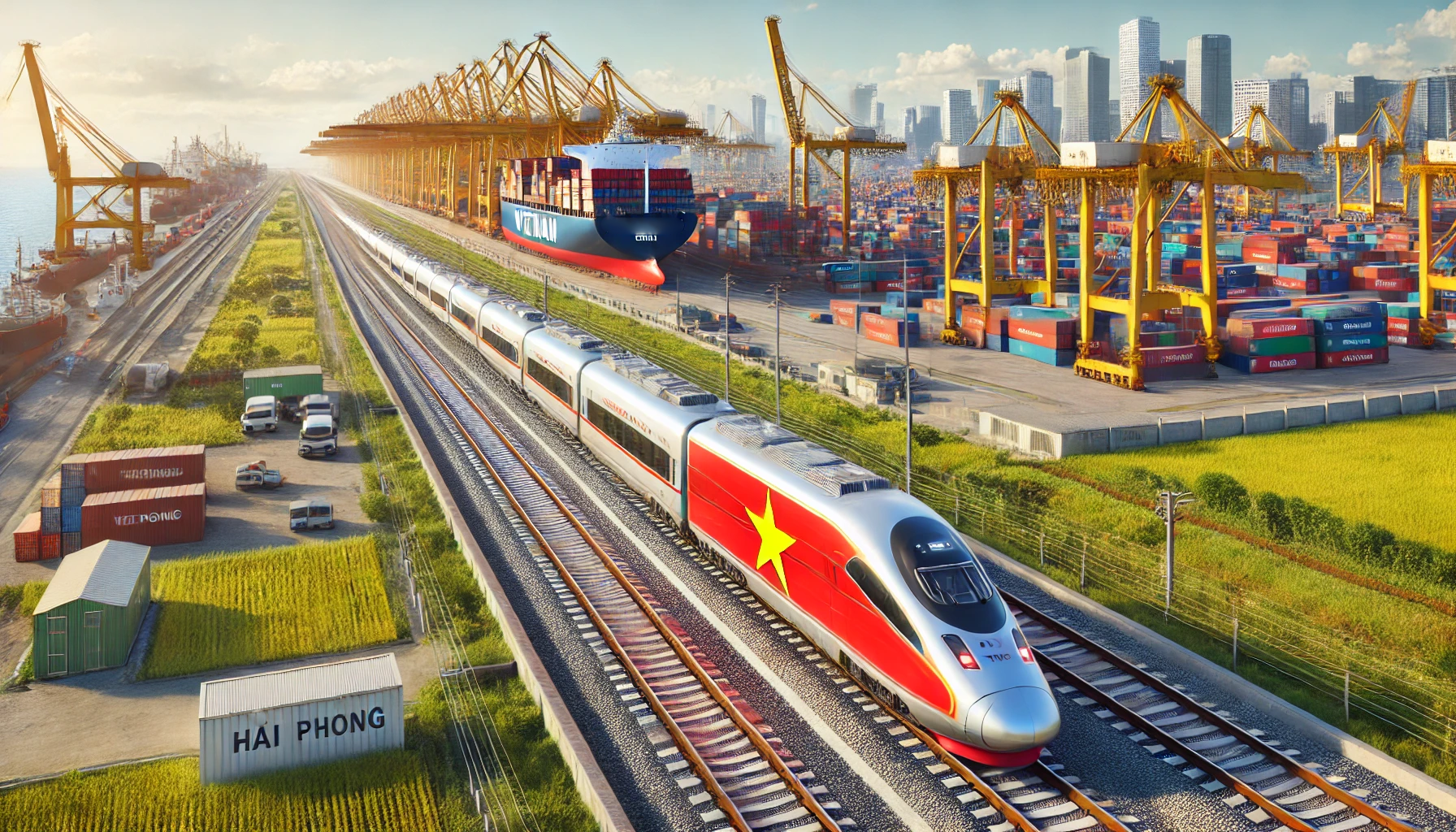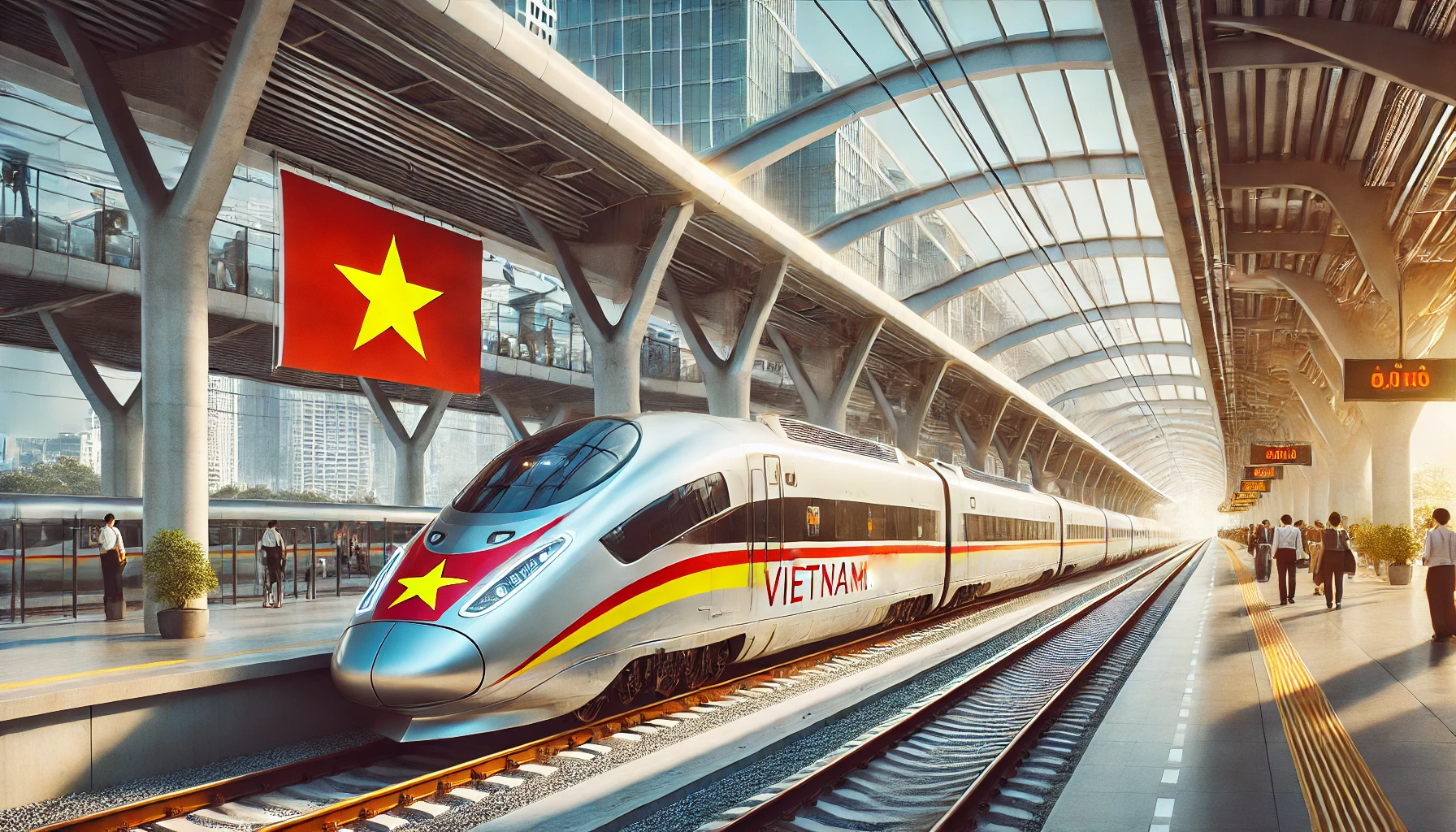Bolstering Resolve to Invest in Rail Lines Connecting to China and Laos
The Prime Minister recently signed Decision No. 999/QD-TTg dated September 18, 2024, establishing a task force for implementing investment in rail lines connecting to China and Laos.
The task force is an inter-ministerial coordinating body that assists the Prime Minister in researching, directing, and coordinating the resolution of important and inter-sectoral matters related to the deployment of planning and investment in rail lines connecting to China and Laos.
The Minister of Transport serves as the head of the task force. Its members comprise leaders from the Ministries of Finance, Construction, Science and Technology, and Natural Resources and Environment; representatives from the Ministries of Public Security and National Defense; the leader of the State Capital Management Committee; and the Chairman of the Vietnam Railway Corporation.
The task force is responsible for assisting the Prime Minister in directing and urging relevant ministries and sectors to resolve critical issues pertaining to the deployment of planning and investment in rail lines connecting to China (with a total investment of USD 10-11 billion) and Laos (approximately USD 6.3 billion).
It involves studying, consulting, recommending, and proposing orientations, solutions, mechanisms, and policies to address bottlenecks, mobilize resources, accelerate progress, and successfully implement the rail lines connecting to China and Laos (with priority given to the Lao Cai – Hanoi – Hai Phong line, aiming for construction commencement in 2025).
Prioritizing Investment in the Lao Cai – Hanoi – Hai Phong Line
In the decision to establish the task force for implementing investment in rail lines connecting to China and Laos, the government also emphasized the priority given to the Lao Cai – Hanoi – Hai Phong line.
On September 14, the Ministry of Transport announced its focus on accelerating the progress of the Lao Cai – Hanoi – Hai Phong rail project, aiming to submit it to the National Assembly for consideration and approval of the investment policy in 2025 and striving for construction commencement in 2027.
It is known that the Ministry of Transport has decided to assign the Railway Project Management Board to organize the preparation of a pre-feasibility study report for the investment project to build the Lao Cai-Hanoi-Hai Phong railway line.

Illustration by AI ChatGPT
The project promises to contribute to the improvement of the national transportation system while boosting economic development in the region, particularly cross-border trade between Vietnam and China.
The project is expected to pass through 8 provinces and cities, including Lao Cai, Yen Bai, Phu Tho, Vinh Phuc, Hanoi, Hung Yen, Hai Duong, and Hai Phong, with the final point at Lach Huyen Port in Hai Phong, a crucial link in the development of the country’s maritime and logistics industries.
The line will feature 73 large bridges with a total length of over 130 km, 25 tunnels measuring 25 km in length, and 38 stations, including 29 new stations. It is anticipated that this railway will facilitate both passenger and freight transportation, with a total investment of approximately USD 10-11 billion.
Long-term forecasts indicate a cargo transportation capacity of 10 million tons per year and the operation of 15 train pairs per day. There will be 41 stations along the route, including 5 primary stations for train assembly: Lao Cai, Yen Thuong, Nam Hai Phong, Ha Long, and Cai Lan. Additionally, there will be 27 stations for train overtaking and 5 intermediate stations facilitating both passenger and cargo operations.
How is the Vietnam-Laos Railway Connection Planned?
This is a significant project within the broader Vietnam-Laos railway undertaking, which is a top priority for the governments of both Vietnam and Laos. It reflects the commitment to economic development and infrastructure enhancement as outlined in high-level agreements between the two countries’ ruling parties.
The Vientiane – Vung Ang railway line spans a length of 554.7 km across the territories of Laos and Vietnam. The project encompasses a double-track design with a standard gauge of 1,435 mm and a maximum speed of 150 km/h. The total investment is estimated at VND 149,550 billion (approximately USD 6.3 billion), and it will be implemented through a public-private partnership (PPP) model.

Illustration by AI ChatGPT
The project includes 8 stations (one main station and seven intermediate stations) and will be developed through a PPP model. The technology employed will be high-speed electrified trains or diesel-powered trains.
Once the Vientiane – Vung Ang railway is operational, the movement of goods between Vietnam and other Southeast Asian countries will become more efficient and convenient. Consequently, trade between Vietnam and its neighboring countries will be significantly enhanced.
This railway line, connecting Vientiane to Vung Ang port, will further interconnect with the Laos-China railway line, targeting markets in Northeast Thailand, China, South Korea, Japan, and potentially Europe.
Moreover, it will enhance cargo transshipment capabilities at Vung Ang port, fostering trade and regional and international connectivity. The project will also present expanded opportunities for Vietnamese and Laotian businesses to collaborate in various promising sectors when it becomes operational.
Additionally, this railway will facilitate travel for tourists from Laos and other countries wishing to visit and vacation on the beaches of central Vietnam, particularly those near the Vung Ang port. The ease of cross-border travel will stimulate the development of interconnected tourism packages between Vietnam and Laos, fostering cultural exchange and tourism promotion.















